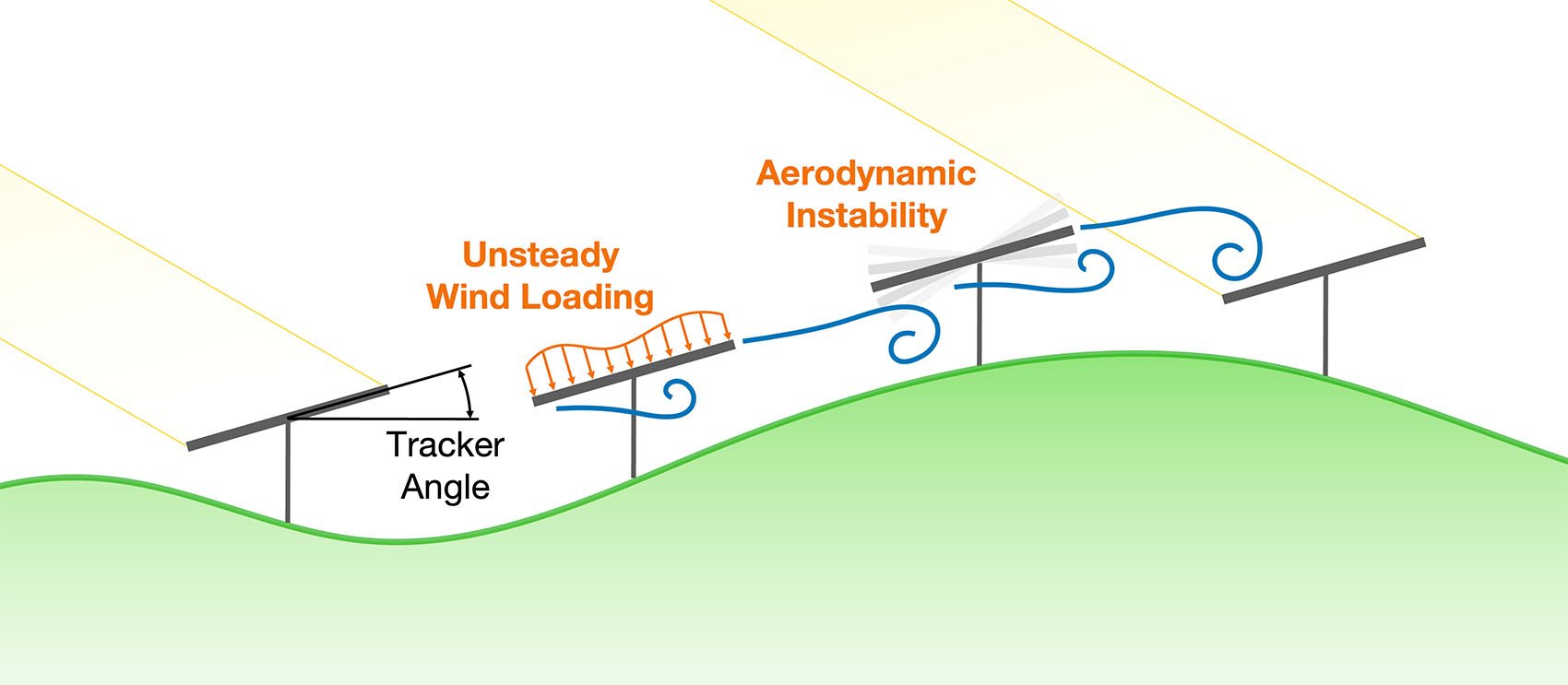PVade: Photovoltaic Aerodynamic Design Engineering Software
NLR's PVade (Photovoltaic Aerodynamic Design Engineering) software simulates wind loading, structural deformation, and stability phenomena in solar-tracking photovoltaic (PV) systems.

PVade can help identify strategies for maximizing stability and reducing loads to reduce degradation and increase system lifetime.
Download PVade
The software suite can be accessed via a GitHub repo.
High wind speeds and extreme weather events can initialize cracks in PV cells and glass, potentially necessitating the replacement of entire sections of an array. Even modest wind speeds can create buffeting pressure forces and reversing loads on the panel surface leading to the worsening of existing cracks over time. Both of these effects are exacerbated by current trends in PV installations, which are moving toward larger, thinner modules which catch more wind and experience larger deformation. Understanding how these dynamic wind loads and unsteady pressures are associated with panel degradation and failure will enable researchers to predict degradation and reduced power output.
Publications
Predicting Wind Loading and Instability in Solar Tracking PV Arrays, NLR Presentation (2023)
Contacts
Share
Last Updated Dec. 7, 2025
